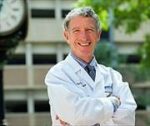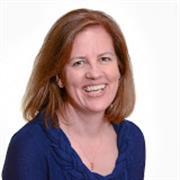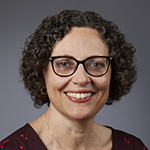Symposium Examines Resiliency in Aging
There is no magic formula to a long, healthy life, concluded panelists at an online symposium, Resiliency in Aging, held Thursday, Feb. 15. Instead, longevity is a combination of genetics, healthy living and positive aging, and effective interactions with healthcare.
 Thomas Perls
Thomas Perls
“Aging is very complicated, with many, many different biological mechanisms and interactions with environmental factors at play…so there isn’t one answer,” said Resiliency in Aging panelist Thomas Perls, MD, MPH, FACP, professor of medicine and founder and director of the New England Centenarian Study.
Perls summarized the major determinants of longevity according to his acronym SAGEING: Sleep; Attitude, especially optimism and managing stress; Genetics, including a review of family history to screen and prevent potential familial health issues; Exercise, especially strength training for older people; Interests, nurture new and cognitively challenging interests to build cognitive resilience; Nutrition, to be at a healthy weight and minimize red meat; and, Get rid of smoking and anti-aging quackery.
“No testosterone, no human growth hormone and a slew of other nostrums that hucksters try to sell that do not work and are more than likely bad for you,” said Perls.
 Hollis Day
Hollis Day
Attended by nearly 140 people, the virtual symposium was introduced by medical school Dean and BUMC Provost Karen Antman, MD, and was moderated by Hollis Day, MD, MS, MHPE, associate professor of medicine and chief of geriatrics at Medical Center (BMC). Along with Perls, panelists included Lisa Caruso, MD, MPH, associate professor of medicine and vice chair of quality and patient safety at BMC; Lewina Lee, PhD, associate professor of psychiatry and an investigator at the National Center for PTSD based at VA Boston Healthcare System.
Day noted there is a shortage of geriatricians (primary care doctors with specialized training in treating older patients). There are currently just 7,300 board-certified geriatricians, but with an aging U.S. population, an estimated 30,000 will be needed over the coming decade. Day said BU is helping to fill that gap.
“BU is a genuine national leader. The required fourth-year geriatrics clerkship is the envy of many of my colleagues across the country,” said Day, who praised the longest-standing home care program in the United States that has medical students accompany geriatrics faculty on home visits to patients and instills in students the importance of social determinants of health.
“Going to a home really helps us all understand why our older patients, and their younger family members, may or may not be resilient,” said Day.
 Lewina Lee
Lewina Lee
Lee pointed out that while the human lifespan is becoming longer, that does not necessarily translate into more years in good health as medical science gets better at acute interventions to save lives. The more desirable outcome is to increase the number of years in good health and spend fewer years with disease and disability.
While primary, secondary and tertiary intervention can delay the onset of disability, frailty and diseases, Lee emphasized the importance of “going upstream” through primordial interventions that tackle risk factors and pathological processes before disease onset. She described a study that demonstrated having greater socioeconomic resources and fewer stressors in early life could foster an optimistic outlook, which in turn was associated with longevity. In another study based on two large cohorts for up to 30 years, “the most optimistic men and women had 1.5 to 1.7 times greater odds of living beyond age 85 than the least optimistic individuals,” said Lee.
Perls said that many of the behaviors highlighted by the SAGEING acronym are emulated by Seventh Day Adventists who as a result have an average life expectancy of close to 90 years. The Centenarian Study shows, however, that living well beyond 90 and into the early hundreds likely involves combinations of protective genes, each with individually modest effects, but in the right combination they can have a strong effect.
“About 75% of the variation in survival to around age 90 is due to differences in health-related behaviors. Getting to 105 and older probably entails the opposite, where 75% of the variation in survival is because of these relatively rare genetic signatures,” said Perls.
Perls said the Centenarian Study also is looking at individuals who have cognitive function that meets the norms of people 30 years younger. They are called cognitive . Additional studies of these individuals include brain MRI scans and gene expression studies on samples from post-mortem donated brains. One particularly interesting study, done in collaboration with Associate Professor of Medicine George Murphy, PhD, at the BU-BMC Center for Regenerative Medicine, uses pluripotent stem cells derived from blood samples to figure out the biological mechanisms underlying centenarian resiliency against aging-related diseases like Alzheimer’s.
While some older adults may have the genetics and lifestyle to avoid hospitals and nursing homes, others are not as fortunate.
 Lisa Causo
Lisa Causo
“It’s going to be inevitable,” said Caruso. “I’ve spent my career caring for older adults in one of the most dangerous, precarious health care settings for them, which is the hospital…We (geriatricians) try to eliminate or minimize stressors so that they can more readily rely upon their reserves to get through what put them in the hospital in the first place.”
Caruso said there are evidence-based interventions to accomplish that, and pointed to what she calls the “4 M’s”: What Matters, Medication, Mentation and Mobility.
“For What Matters, prioritize care decisions to what matters most to the patient,” she explained. “For medication, proactively look at medication lists and eliminate those with bad side effects. For mentation, prevent, identify, treat and manage as optimally as possible cognitive issues like dementia, depression and delirium. And finally, for mobility, ensure that older adults move safely every day to maintain function.”
One-quarter of BMC admissions are patients over age 65, approximately 400 per month, and the geriatricians helped the hospital take an interdisciplinary approach – with pharmacists reviewing medications, nurses trained to perform assessments for confusion and a delirium prevention and care plan, and a team performing mobility assessments with a daily mobility goal.
“It’s taken a village to care for older adults in the hospital,” said Caruso.
View all posts